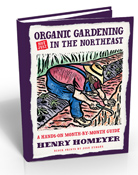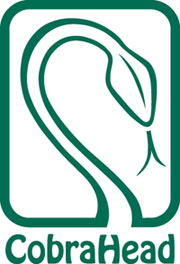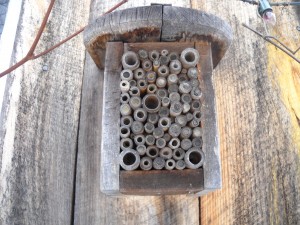Native Pollinators
Most gardeners know that our native bumblebees are good pollinators: reliable workhorses that pollinate even when honeybees stay in the hive and complain that it’s too chilly, or that they don’t like the rain. But you may not know that there are many other native pollinators, some very specialized, and that they can help us get good harvests. There are things we can do to support our unsung helpers including some that we can do now, in the dead of winter.
I called my friend Jim Kennedy who is a Landscape Architect/Wetland Scientist living in Etna, NH. He manages his large tract of land with a priority for nurturing wildlife of all sorts – from planting buckwheat along the edge of the forest to feed the deer, to creating meadows for woodcocks. He is a beekeeper, but also takes steps to provide food for native pollinators.
Native pollinators include about 4,000 species of bees and wasps. Unlike honeybees, most native pollinators are solitary – they do not live in a hive with other bees and wasps. Jim directed me to the Xerces Society (www. xerces.org) which is a group for“Invertebrate Conservation” in North America.
Native pollinators need three things to be successful: adequate food, generally in the form of native flowers; a suitable place to lay eggs and shelter their brood; and lastly, protection from pesticides.
Jim Kennedy does what I do: he avoids cutting down stands of milkweed that grow on his property. Monarch butterflies like them, but they also provide nectar for other pollinators. He encourages dandelions because they are one of the first food sources for bees in the spring. (Tell that to the lawn dudes that want to ‘nuke’ your dandelions. And he waits until late in the fall to cut down goldenrod in his meadows. Yes, a field may look a little messy if you leave stands of goldenrod or milkweed, but who cares what the neighbors think?
Garden flowers can provide food for bees, too. But flowers that are from Europe or the Far East may not attract our native bees the way native flowers do, or feed them as well. Flowers that are good for native pollinators include asters, black-eyed Susans, elderberries, Joe Pye weed, purple coneflowers, salvias, sedums and willows.
This is a time of year when you could build some nesting sites for native solitary bees. I have a simple nesting box on the side of my barn, and I occasionally see little bees or wasps coming and going in summer. It looks like a bird house, but the front side is open and it is filled with 6-inch lengths of bamboo of different diameters stacked up from wall to wall and top to bottom. Each piece of bamboo is open on the end facing out, and closed off at the other end. Here is how to make one:
What you are trying to create is an open-faced box with a slanted roof. I recommend using“five quarter” cedar because it is a full inch thick, and less likely to split when you nail or screw the box together. You should probably pre-drill your holes before screwing the pieces together. The opening of the box should be 4 inches by 6 inches, and the side pieces need to be cut on a slant (from back to front) to create a sloping roof when you put the top on (water will drip off the front, so create an overhang). The bamboo (or even dry stems of Japanese knotweed) should be stacked into the little building you have created, filling it up completely. Opening diameters should range from 1/8” to 3/8”.
Another way to create a nesting site for native pollinators is to use a 6-inch diameter block of wood that is 12-18 inches long and drill it full of holes ranging in diameter from 1/8 inch to 3/8 inch. Space the holes about ¾ inches apart in rows. For holes up to ¼ of an inch, the holes can be 3-4 inches deep; for those ¼ inch or larger, 5-6 deep inches is recommended. Hang this – or your bee box – on your barn or in a tree with the drilled holes facing east to get morning sun.
The majority of native bees actually nest in the ground. Jim Kennedy leaves bare soil around his pond to make it easy for the bees to find good nesting sites. And most bees, yellow jackets excepted, have no interest in stinging you. Yellow jackets can be aggressive, but the nests do not survive the winter, so when I get one near my garden, I just avoid it and the next year it is gone.
I do not use pesticides, but be informed that if you do, you can be killing bees along with the pests. The neonicotinoids are a class of chemicals that are called “systemic poisons”. That means that they are absorbed by the plants, and the chemical is present throughout the plant, including the pollen and nectar, so it will kill bees that feed on them. So your Oriental lilies, if sprayed to keep the lily leaf beetles at bay, can do a lot of damage. Some trade names of systemic pesticides include Rose Defense, Marathon, Merit and Bayer Advanced – and lots more. Any pesticide can kill beneficial insects by drift or overspray.
It will be awhile before we see bees, but it is good to think about them while it is still cold and snowy.
Henry Homeyer has a new book, a fantasy-adventure chapter book for kids. It is Wobar and the Quest for the Magic Calumet and is about a boy and a cougar. His website is www.henryhomeyer.com.



